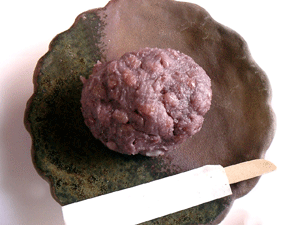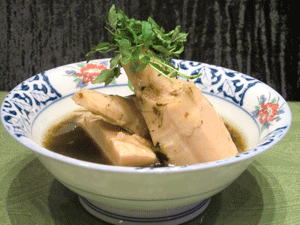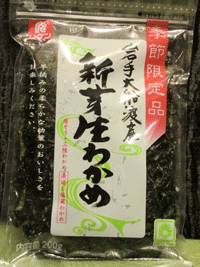Major Natural Disaster and Environmental Crisis in Japan Reinforces the Importance of Food Science & Technology (Online Exclusive)
Recent events in Japan have affected the availability and safety of the food supply. Food science and technology offer solutions for feeding people in disaster areas as well as a growing global population.
What if a fire, flood, earthquake, tsunami, or any other major disaster destroyed your lifetime of work, all your contacts’ database, and all of your business information? How would your company survive, given such a worst-case scenario? So much expertise can be lost in a second!
As the global population increases, there is a greater likelihood that more humans will experience the terror of these natural occurrences within their lifetime. How can we prepare for these types of disasters and how can we provide clean water and safe food for our survival?
As a resident of Tokyo, Japan, these hypothetical questions became all too real for me recently with the devastating earthquake and deadly tsunami and subsequent nuclear environmental crisis.
Looking outside my window during a recent spring rain shower, my thoughts turned to whether this rain is radioactive. I think about how much progress we have made since the Second World War and now we are facing another nuclear disaster.
Japanese Food Culture
In Japanese culture, the spring rain is called “good rain, welcome rain, and beneficial rain.” It is a time of hope for our farmers and horticulturists as they look forward to a bountiful crop of agricultural produce. I do not know if this rain is good or bad.

In celebration of Vernal Equinox Day, I usually visit my parents’ memorial with flowers and some food items. The food we take is called Botamochi, which is a springtime treat made with sweet rice and sweet red bean paste. The dish is made by soaking sweet rice for approximately six hours. The rice is then cooked, and a thick red bean paste is hand packed around preformed balls of rice. Botamochi means “to be like a flower”, and can also signify protection against misfortune. It comes from the red color of the bean.
I was born after the Second World War and my mother instilled in me the importance of food. Everyone was very poor and hunger was a big concern during and after the war.
At present we appear to be a well-fed nation but this recent disaster has changed our thinking about everyday things like food and water that we take for granted. During the height of the crisis, I was not able to drive my car to collect gasoline. When I visited the supermarket, I was unable to purchase daily necessities due to panic buying by consumers. We have experienced a small amount of damage in Tokyo from the earthquake itself but the problem for us is the nuclear radioactivity that has contaminated our water and food.
As a food scientist, housewife, and consumer, the only option for me for purchasing goods was to visit a local wholesale market in Tokyo. Restaurants were also not able to purchase supplies to keep their businesses going and they have had a decrease in business as a result.
Fortunately, I was at home preparing for a business trip when the earthquake struck. When I returned to my office in downtown Tokyo, it was such a mess. Everything had fallen off shelves and boxes had emptied all over the floor. I am sure had I been at work I would have suffered some injury.

Recently I had dinner, a typical spring dish, at home with my husband. I wish to keep our habits around seasonal meals as they are generally a time for thinking about healthy foods and our food culture. I cooked bamboo shoots and wakame (edible seaweed); the topping was Sichuan pepper. It is really healthy with plenty of dietary fiber. But I was so sad to see the wakame packaging, which was sent to me by my friend’s food company. It comes every spring as a gift and had arrived at home the day before the earthquake. When I saw the packaging of wakame, I noticed it had come from the area of the tsunami (Ofunato seaside). I wiped away my tears, as I recalled how many people had been killed and are still missing and injured ... most of them worked at this factory and would surely have died. It is so very sad.
Wakame fronds are green and have a subtle sweet flavor and slippery texture. The leaf is cut into small pieces, which expand during cooking. Wakame is distributed either dried or salted, and used in miso soup, tofu salad, and prepared foods. Wakame is a rich source of eicosapentaenoic acid, an omega-3 fatty acid. It doesn’t have many calories and has good levels of calcium, iodine, thiamine, and niacin.
When I joined WHO and their education program as a lecturer, I always made mention of the traditional diet of Japan, and how to lessen malnutrition in undeveloped countries.
--- PAGE BREAK ---
Feeding a Growing Global Population
Last year, IFT published the scientific review titled “Feeding the World Today and Tomorrow: The Importance of Food Science and Technology.” The authors described the scientific and technological achievements of our modern production-to-consumption food system, which is capable of feeding nearly 7 billion people. They also discussed the promising potential of ongoing technological advancements to enhance the food supply even further and to increase the health and wellness of the growing global population. To read this article, please click here.
The review begins with a historical perspective that summarizes the parallel developments of agriculture and food technology, from the beginning of modern society to the present.
It contains several sections, including:
- Food manufacturing — explains how food is processed and details various food processing methods that ensure food safety and preserve the quality of products.
- Potential solutions to future challenges — briefly discusses ways in which scientists, the food industry, and policy makers are striving to improve the food supply for a healthier population and to feed the future.
- Applications of science and technology within the food system have allowed production of foods in adequate quantities to meet the needs of society.
The review states, “Today, our production-to-consumption food system is complex, and our food is largely safe, tasty, nutritious, abundant, diverse, convenient, and less costly and more readily accessible than ever before. Scientific and technological advancements must be accelerated and applied in developed and developing nations alike, if we are to feed a growing world population.”
Improving and developing new products for the future must include food science and technology.
Developing Nonperishable Prepared Foods
When the earthquake and tsunami first happened, we suddenly found that we needed to supply emergency food and meals to victims. But we could only supply approximately one million meals and we quickly ran short of stocks. This occurred due to lack of electricity to process and transport foods and infrastructure damage, so distribution was difficult. In addition, we faced a very serious shortage of packaging for our foods. And, of course, panic buying created more pressure on an already stretched supply chain.
 Prepared meals would have provided instant relief to this situation; the energy source they provide would have helped us to survive the initial days without adding to the pressure on stretched food supply chains. The current diet of the Japanese affected by the earthquake is lacking the usual nutrients of a normal balanced diet; we are only able to source certain products.
Prepared meals would have provided instant relief to this situation; the energy source they provide would have helped us to survive the initial days without adding to the pressure on stretched food supply chains. The current diet of the Japanese affected by the earthquake is lacking the usual nutrients of a normal balanced diet; we are only able to source certain products.
In light of what has happened in Japan, we need to develop nonperishable prepared foods as part of a disaster plan to feed people affected by any future disasters.
About 10 years ago, I visited the Natick Army Research, Development & Engineering Center in Natick, Massachusetts. Gerald Darsh, Department of Defense Combat Feeding Director, discussed Natick’s primary responsibility of refueling the American war fighter. He said that Natick’s research process covers the entire spectrum from physical and biological sciences to engineering, materials, and behavior science. Foods for the military require extended shelf life, the ability to drop easily, and stringent caloric and nutritional density requirements, he explained.
At the IFT Annual Meeting & Food Expo last summer in Chicago, I visited the Natick booth, which had introduced a new type of ration, ready-to-eat sandwiches. The product is compact, convenient, portable, requires no refrigeration, and no preparation. Users just tear open the pouch and eat. The product, which seems well suited for elderly people or for disaster situations like we are experiencing in Japan, has a longer shelf life of up to three years.
These kinds of products are already on the market. Bridgford Foods Corp., Anaheim, Calif., markets a line of shelf-stable, ready-to-eat sandwiches in eight varieties—barbecued beef, barbecued chicken, Italian style, bacon in cheese-flavored bread, pepperoni stick, Italian soy marina, cinnamon bun, and plain flat bread. They contain moderate calories. Depending upon the sandwich, a case can provide enough calories to sustain a person for 4–7 days.
These products certainly have a place in household emergency kits in preparation for the expected as well as the unexpected, such as earthquakes and other natural disasters. They can be kept at work, school, or home. They can be stored at room temperature and can be eaten hot or cold.
These products certainly have many applications. They are using new packaging technologies composed of a quad-laminate material. This material has four layers—polyester, nylon, foil, and polyolefin that work together to produce extremely high barrier properties to protect the food against microbial, chemical, and physical deterioration under extreme environments. At Natick, ongoing research is looking at using a material that will remove the foil and reduce the weight of the packaging. When these products are made, they need to include heat-sterilized food ingredients (shortening, preservative agents, and other food additives). The products contain some secret ingredients and several preservative agents, likely to be sodium benzoate and sorbic cid, as well as dough conditioners (diacetyl tartaric acid, esters of mono and diglycerides, L-Cysteine, etc.). How does all the components in these products remain shelf stable ... is it due to the packaging in which the food is contained? Unfortunately, the environment would suffer as the packaging would not break down easily.
--- PAGE BREAK ---
Transporting Food to the Affected Areas
In Japan, the majority of the food supply is distributed by convenience store chains, so tracking the transportation of food is easy, an average of 15 tons each track. It is convenient and similar to the chilled channels. It has meant chilled supplies for lunchboxes and ready meals have always been available to the Japanese people. Unfortunately, we have not been able to make enough use of the train system we have in place to transport these goods. Trains can move big volumes with much smaller energy consumption. The Shinkansen rail system has experienced over 1,000 areas of damage due to the earthquake.
Usually, these convenience stores have many items and selection. But the transportation of goods was hampered due to the earthquake so no fresh sandwiches were available for sale for quite some days at the beginning of the disaster. Even now we are not able to source our usual supplies.
Many factories were damaged by the earthquake. No ready meals or rations were available. The factories need food ingredients and packaging and electricity to be able to make these goods and unfortunately everything was in turmoil.
Radioactivity and Food Safety
During the first few weeks of the crisis, Japan announced that radiation was detected in spinach and milk produced near the Fukushima nuclear plant. While the level fell low enough to not pose a long-term threat to human health, they were above the national safety level, so the Japanese government has stopped sales of food products grown near the damaged plant and the harvesting and sale of seafood from that area. The Japanese government is advising its people of what foods are safe to eat. They have made the farmers in the earthquake struck areas to dispose of their crops, which the farmers now want compensation for.
In Japan, people have never forgotten the atomic bombs of Hiroshima and Nagasaki. It is a sad part of our history and it influences people’s opinions on food irradiation.
I wrote an article on irradiating food in the “Food Chemical Newspaper,” August, 1997, after a visit to the cobalt-60 irradiation facility, which was part of a technical field trip by IFT at its Annual meeting. Some readers complained, explaining their distrust of irradiation. Their comments included many concerns, such as:
“What do we know about nuclear energy?
Nuclear plants are the largest industrial users of water, electricity
Increased cancers and leukemia among workers ...
Risk of fires and mass exposure
Also risk of theft of Intellectual Property and bomb materials ...”
There may be some truth in their complaints.
If radiation were to contaminate Japanese food, fresh produce would most likely be affected first. The surface foods like fruit and vegetables or animal feed can become radioactive by deposit or radioactive material falling on it from the air or through rain water, according to comments from the of World health Organization (WHO) and the United Nations Food and Agricultural Organization. Radioactivity can then build up inside food sources, such as animal or fish, as radionuclides, and settle into soil and or water.
For the time being, any possible future dangers from Japan’s nuclear leak remain insignificant compared with the immediate public health threats we face, including impending cold weather, food shortage, power outage, and a water supply that could become contaminated with harmful pathogens born by flood waters.
We are already noticing some of the above risks and dangers, but we need to be positive and think to the future to find a way to survive this situation and find a better way.
This disaster has been a one in a 1,000 year event for Japan. My wish is that the nuclear plant is able to find a solution to the leaks with the least possible delay!
I hope this article is helpful for the future of food and technology! FT
Kiyoko R. Kubomura, Ph.D., a Professional Member and Fellow of IFT, is President of Kubomura Food Advisory Consultants ( [email protected]).
